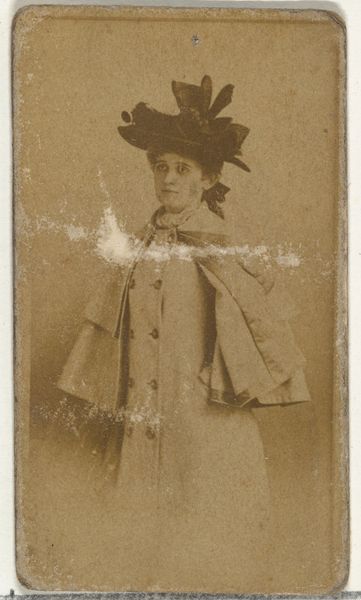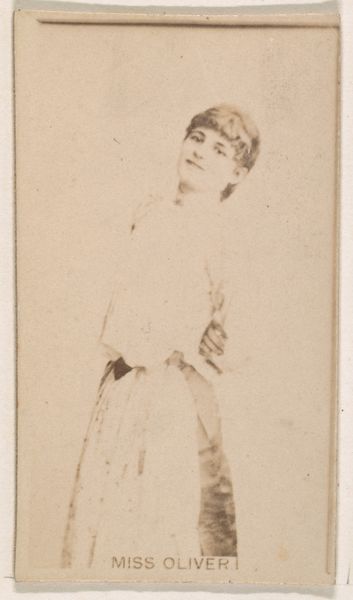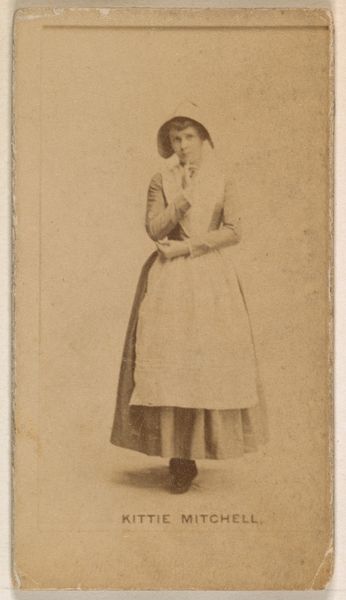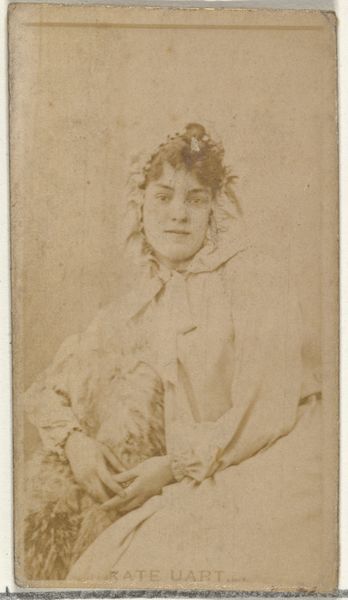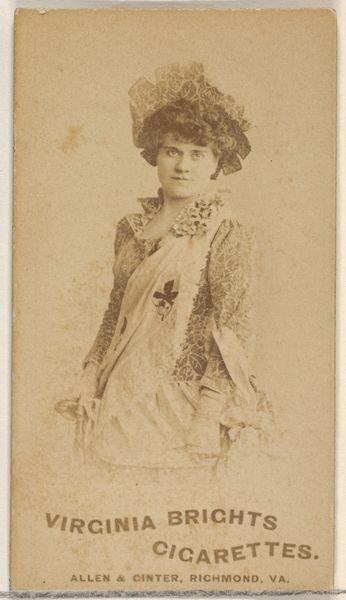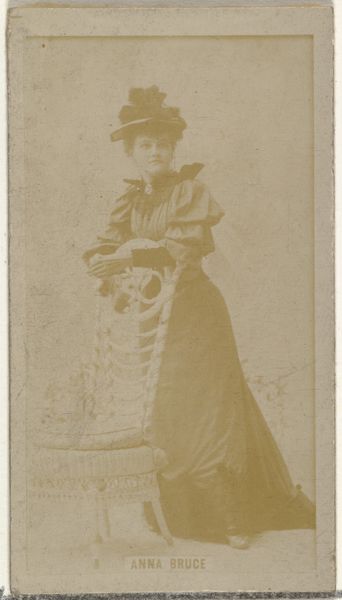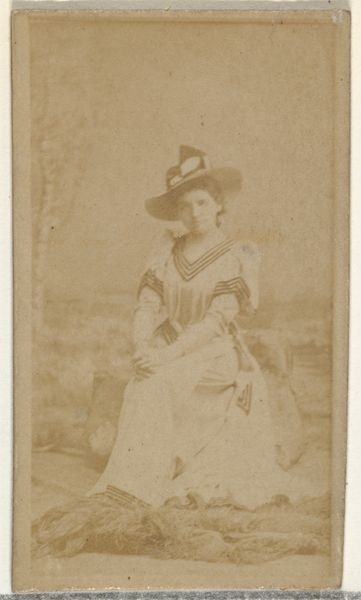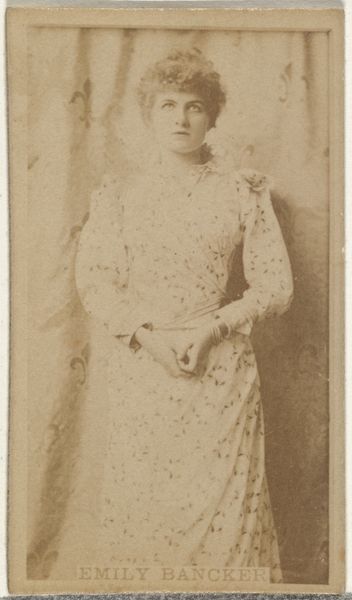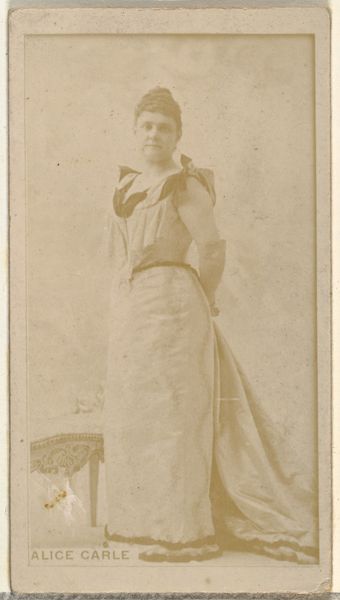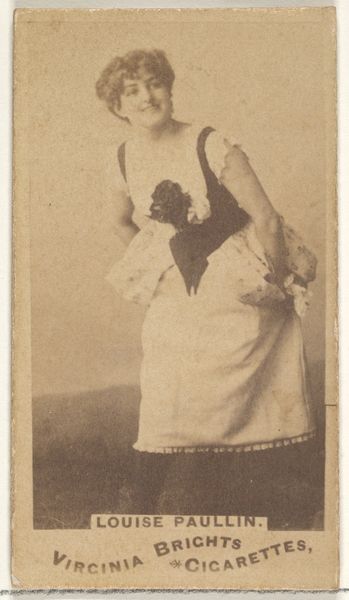
Card 835, Pauline Hall, from the Actors and Actresses series (N45, Type 2) for Virginia Brights Cigarettes 1885 - 1891
0:00
0:00
drawing, print, photography
#
portrait
#
drawing
# print
#
photography
#
coloured pencil
#
academic-art
Dimensions: Sheet: 2 3/4 x 1 3/8 in. (7 x 3.5 cm)
Copyright: Public Domain
Editor: So, this is "Card 835, Pauline Hall," a photograph from the Actors and Actresses series, made by Allen & Ginter sometime between 1885 and 1891. It's a fairly straightforward portrait, but I'm curious about its existence as a collectible item for Virginia Brights Cigarettes. What's significant about that context? Curator: Exactly! Let’s focus on that connection. These cards weren't just art; they were incentives, little material objects distributed to promote a consumer product. We should be asking what sort of labor and processes went into its making. Who were the photographers? How were these images reproduced on such a small scale? Consider how the company repurposed the artistic representation of actresses for their own gain. What statement does that make on artistic ownership? Editor: That makes me think about the impact on the performers. This was also a publicity avenue for Pauline Hall herself, wasn't it? Did receiving promotional exposure on something like cigarette cards affect her agency and public perception? Curator: Yes, and what was the material cost? Allen & Ginter capitalized on Hall’s fame, which raises complex questions about artistic integrity versus commodification. Furthermore, by placing her image on a cigarette card, they also associated her image with a product often linked to the working classes. How did she benefit materially? We must not see art removed from production or marketing. Editor: So it's not just a portrait of an actress, it's a commentary on consumer culture, labor, and celebrity? Curator: Precisely. The materiality of the card, the production process, and its intended use are inseparable from its artistic meaning. By exploring this humble cigarette card, we see larger economic forces at play in the art world and performance world of the late 19th century. Editor: That's a totally different perspective than I was expecting. I'm definitely going to be thinking more about these kinds of implications when looking at portraits from now on. Curator: Great! This piece reveals the intricate relationships among art, industry, and identity. Looking through a materialist lens expands our understanding and challenges us to question conventional definitions of art.
Comments
No comments
Be the first to comment and join the conversation on the ultimate creative platform.
